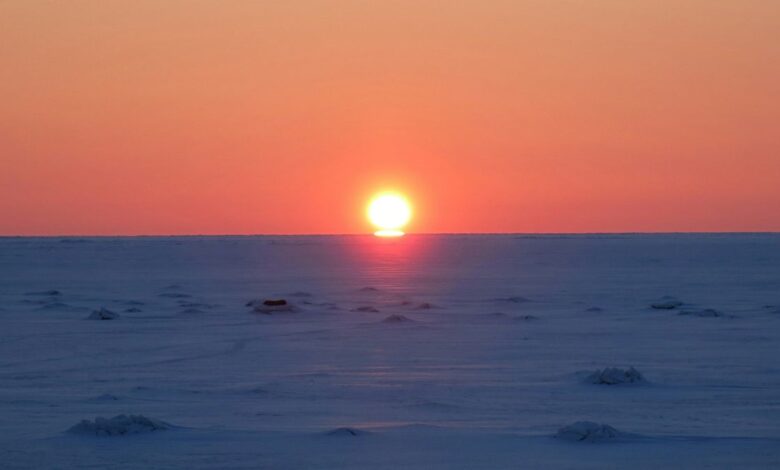Because the climatic models are wrong with the Arctic heating and how scientists are correcting them

Published
If you ask Because the arctic temperatures They increase a lot faster than expectedScientists from the University of Kyushu believe they have found an answer: it is in the clouds.
In a study Published in “Ocean-Lond-Atmosphere Research”, researchers from the University of Kyushu analyzed 30 of the main climatic models And he compared them with satellite observations of the cloud models in the Arctic. They discovered a generalized modeling error.
Most of the simulations overestimated the quantity of ice and underestimate the amount of liquid in the winter clouds of the Arctic. It may seem not an important detailBut it has great consequences to be precise with which scientists can predict the heating of one of the most sensitive regions of the planet.
The clouds could act like a thermal blanket on the Arctic
The Arctic is heating Between three and four times faster than the world average. One of the main reasons is the interaction of the clouds with warmth. In summer, so called mixed phase cloudswhich contain both ice crystals and excessive liquid water, reflect sunlight, cooling the surface. But in the dark winter months, these same clouds capture the heat and isolate the surface as the thermal blanket.
“The more liquid water contain these clouds, the better they take heat,” explains Momoka Nakanishi, co -author of the study. However, most models suggest that the clouds contain less ice than they contain. This could explain why the rhythm of Arctic heating In recent decades it has passed the forecasts. I could also modify Future forecastsBut not for the way you could think.
The future can be less terrible than it seems, but the present is worse
While the Arctic heats up, The ice of the clouds becomes liquidwhich increases its ability to capture heat. This creates a short -term situation known as “Cloud feedback”, This accelerates the heating. But they add investigators, this has a limit.
Once The clouds are rich in liquidThey begin to absorb the heat and generate it completely on earth. That is to say, Additional heating As soon as something changes, because the clouds are already reflecting the heat as much as possible.
Given this Many climatic models They do not carefully represent the amount of liquid already present, they could be predict greater heating of the probable In the future. In other words, they underestimate today’s heating and overestimated tomorrow.
According to the researchers, Correct this defect could improve not only the projections for the ArcticBut also the forecasts of extreme weather phenomena in other parts of the world, influenced by polar systems.
The damage could already be done
The study adds Context of another investigation Aleccionadora, published at the beginning of this month in “Communications Earth & Environment”. According to this study, even if the Global warming is limited to 1.5 ° Cwe could cause An irreversible bench of the enormous layers of Greenland polar ice And the Antarctica, which would cause an increase in sea level in several meters, also in optimistic emission scenarios.
Both studies indicate the same truth: Our understanding of the polar regions, from clouds to degel, continues to be at the height of reality. If the climatic models continue to rely from the observed trends, The world could be surprised by faster changes Of the provisions of the sea level, extreme weather phenomena and the collapse of ecosystems.
In the words of Takuro MichibataCo -Author of the study on the clouds: “The correction of these models is essential not only for the Arctic, but to understand their impact on time and climate change throughout the planet”.




